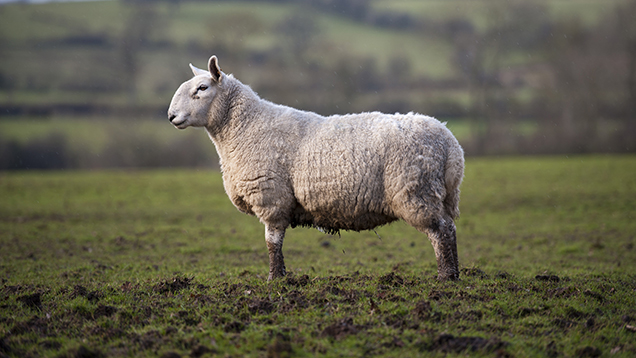How farmers can treat and manage liver fluke
 © FLPA/Rex Shutterstock
© FLPA/Rex Shutterstock Liver fluke infestation is often a problem in the late autumn and winter in the wetter western areas of the UK, although it is becoming prevalent in eastern areas of the country due to the introduction of infested sheep.
While it is a common problem, a survey of 220 British and Irish farmers revealed only 8% understand how to correctly treat livestock for liver fluke.
More than half of those questioned had experienced liver fluke in their stock, yet only 19% were aware of the parasites intermediate host, the mud snail.
See also: Fluke survey reveals only 8% of farmers are treating correctly
Elanco vet Matt Colston said 72% didn’t focus their treatment on preventing mud snail infection, which is vital in breaking the lifecycle of the parasite.
Treatment issues
A quarter of farmers also begin treating too late – either when they see signs of disease, or when animals begin to die.
One-third of farmers said they were also using treatments to try to prevent liver fluke infecting flocks. However, this does not work as no treatments are long-acting.
Diagnostic tests for fluke are vital but the right test at the right time must be carried out.
For example, faecal egg counts must be taken when the fluke are eight weeks old and laying eggs to avoid a negative result, which doesn’t mean the animal is fluke-free, just that there are no adult fluke present.
Blood tests for fluke antibodies are useful for animals in their first grazing season to diagnose when they are first affected.
But once they have tested positive, the antibodies remain in their system for the rest of the grazing season, even after the fluke have been killed.
Sustainable management
Fiona Lovatt, independent sheep consultant, recommends a four-pronged approach to fluke management.
While many farmers are aware of the physical steps needed to reduce mud snail habitats and how to graze animals to reduce the level of challenge, less is understood about how to prevent liver fluke eggs reaching the pasture when snails are active.
Farmers need to treat in late spring/summer to remove the adult fluke as they lay eggs which get excreted onto pasture and can infect mud snails that are out of hibernation at this time.
Killing adult fluke reduces the number of infected snails carrying on the liver fluke lifecycle into the autumn.
Four-pronged approach to sustainable fluke management
- Pasture protection: Prevent liver fluke eggs reaching the pasture when snails are active.
- Pasture management: Reduce snail habitats and therefore reducing snail numbers – topping rushes, improving drainage and poached areas.
- Grazing management: Avoid grazing high-risk pastures with susceptible animals at high-risk times of year.
- Strategic treatments: Use the right product at the right time in the right animals (see below).
Using the right product at the right time in the right animals is crucial:
“Not every product does the same thing. We are trying to dissuade farmers from clutching to one product that works all year round as the risk of resistance development increases. Farmers must target the time of year and the fluke life stage.”
A guide to flukicide choice |
||
|
Autumn/early winter |
Late winter and Spring |
Late Spring and summer |
|
All stages present. Kill down to early immature liver fluke, which are the cause of acute liver fluke deaths in sheep. Or kill down to immature liver fluke for lower challenge. Seek local veterinary advice. |
The number of infective larvae on pastures will be declining. Treatments should target immature and adult liver fluke or adults only depending on the local risk. Seek local veterinary advice. |
Removing adult liver fluke now reduces the number of liver fluke eggs reaching the pasture when snails are very active. This reduces the number of infected snails maintaining the liver fluke |
|
Suggested active ingredient: Triclabendazole/Closantel |
Suggested active ingredient: Closantel/Albendazole |
Suggested active ingredient: Albendazole |
